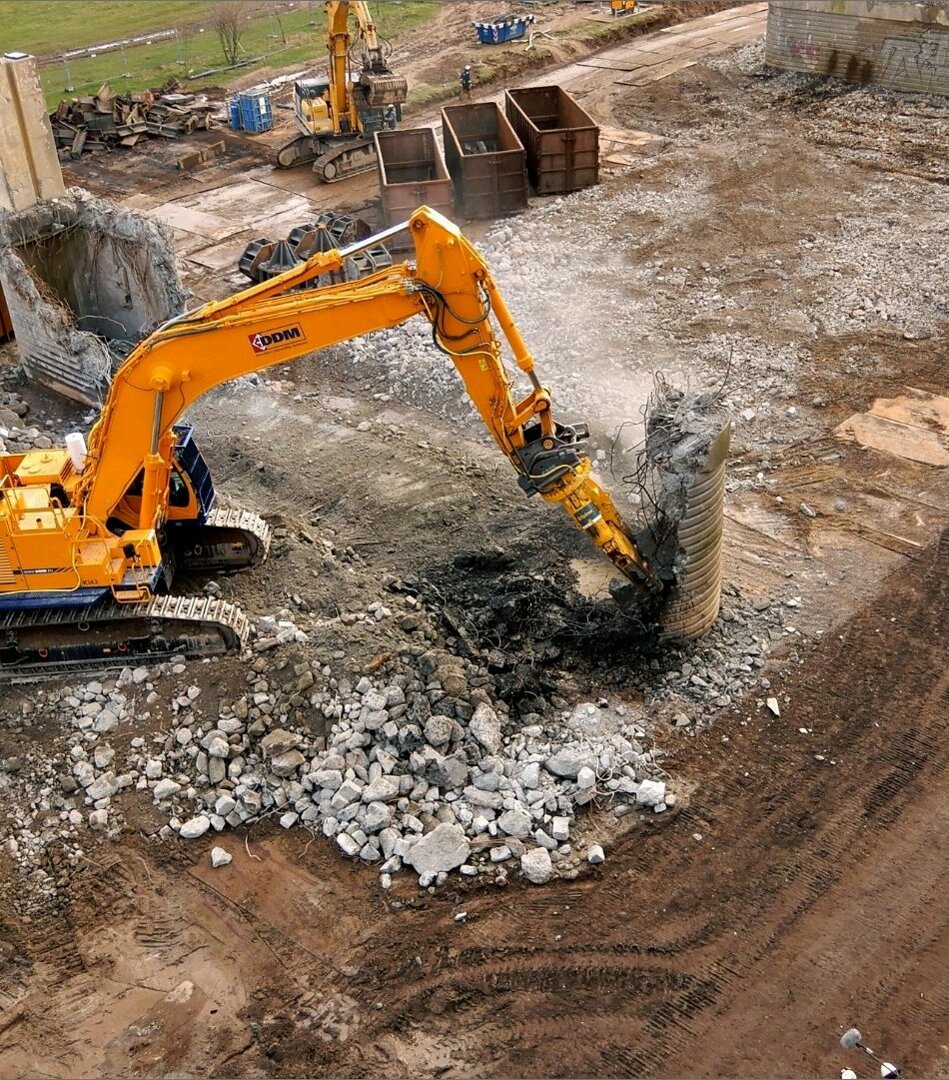

In the Port area in Amsterdam, DDM is currently working on the circular disassembly of DDMs: double-deck equipment.
Discarded train sets that are no longer economically viable, with the aim of recycling at least 96%. These DDMs are part of a three-year contract, covering a total of eighty to one hundred units, in various models. The project is certainly not standard and many different parties are involved. DDM acts as a connecting link and coordinates all work at two locations: the collection and dismantling location.
Before we remove the discarded equipment from the track at the collection location, the client removes all usable parts and liquids. We inspect the carriage and take additional measures if necessary. It is then placed on its side and prepared for a convoy of exception over the public road to the dismantling location, ten kilometers away. Ultimately, nothing remains of the train other than plastic, iron, rubber and glass. It is also a special project for the people at the disassembly site; Normally materials are delivered there in container bins. We come with complete train sets, which we disassemble on site. That attracts quite a lot of attention, both from the people we work with and from the spectators along the route.
As DDM we are very visible in this project. And that visibility means that you as a company are under a magnifying glass. We must do what we do extra well: safely, neatly and with a maximum recycling percentage. The visibility of the client itself is also a crucial factor; the train is still regarded by many as a public good and any imperfection in the process, no matter how small, can have far-reaching consequences for the client's reputation. This makes our responsibility for perfect handling even greater.
Watch a video of the project on YouTube
